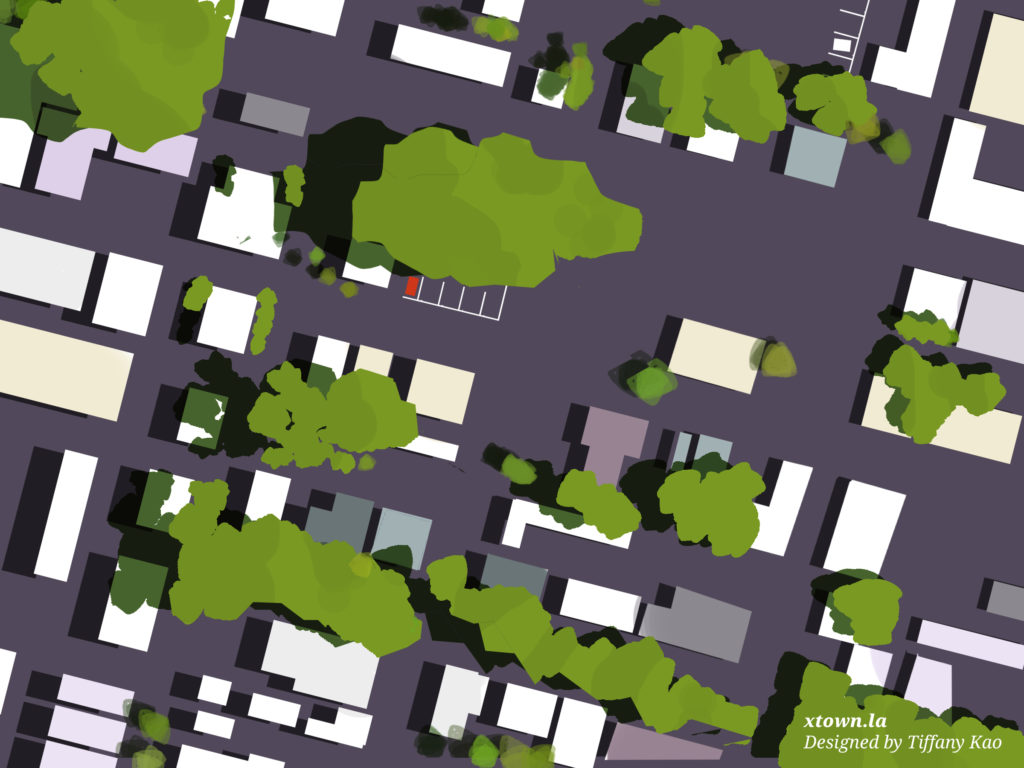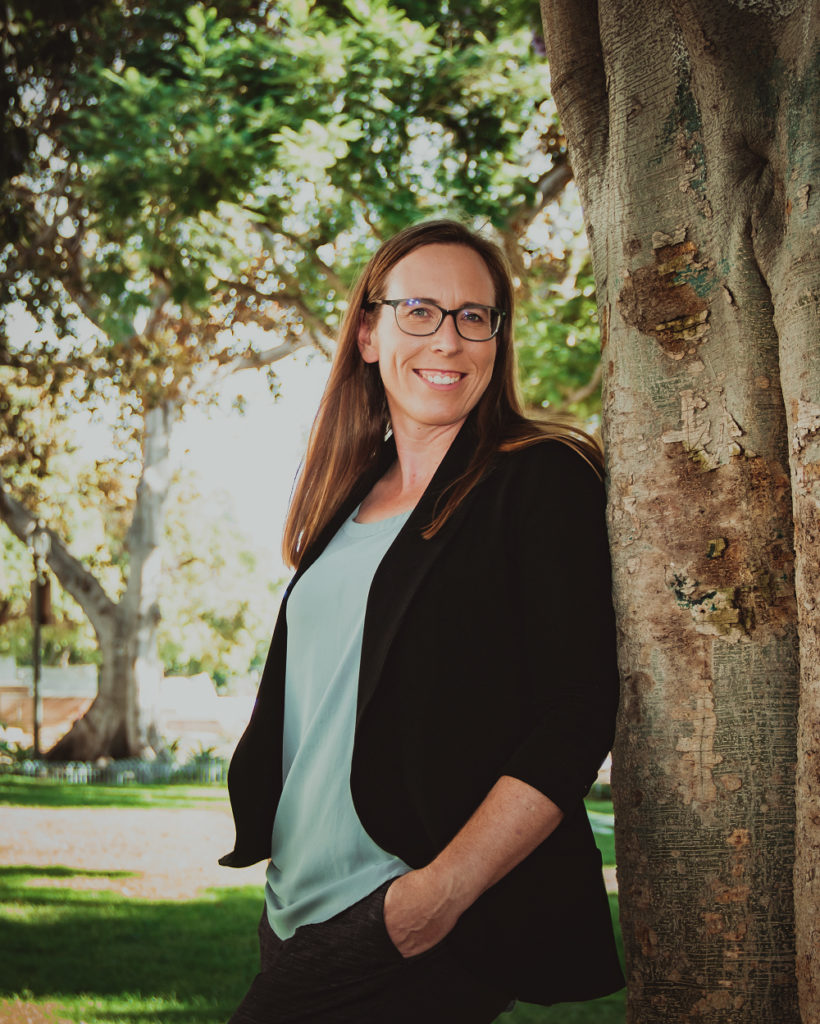‘Everybody has a tree story’

In a 2019 sustainability plan known as L.A.’s Green New Deal, Mayor Eric Garcetti proposed increasing the city’s tree canopy by 50% and planting 90,000 new trees by 2028, with an emphasis on growth in low-income, underserved neighborhoods. Helping the city reach those goals is Rachel Malarich, who bears the title City Forest Officer, and who has spent 15 years working on urban forestry and community engagement.
As Crosstown delves into local environmental data, tree coverage, and the unbearable heat it addresses, will be ever more important. We spoke with Malarich about her position, how she collects data, and how Angelenos can improve their relationships with trees.
This interview has been lightly edited for length and clarity.
Crosstown: What kind of data are you working with and how does that relate to heat and temperature?
Rachel Malarich: I was brought on to coordinate across departments, to make sure that the city had a clear vision for our urban forest and a clear roadmap that all departments could be considering. When it comes to heat data, I talked to the mayor’s office and the sustainability team to say, what kind of metrics have you looked at for heat?
We were talking a lot about how we can represent vulnerable populations. Those are very nuanced questions and there’s a number of factors you can take into consideration with that project. We decided to use the state’s Heat Health Action Index.

Q: What is your thought process when determining which neighborhoods need more trees?
A: Thinking about a neighborhood, you’ve got a couple of components. One is, what is the available space? Second is, where is the community and what do they think? The conversation I want to have is if the site conditions don’t allow us to plant what we need, what’s going to give? Is it infrastructure change? Is it supporting private property planting? The truth is, this is where people live, and people feel more strongly about trees than they do about pretty much any other infrastructure.
I believe that everybody has a tree story and it’s either positive or it’s not. If it’s a negative story, you need to have time to listen to what’s happened, to really hear communities share their concerns and their experience and be able to talk about the best practices.
The sidewalk lift is one that everybody knows. We have sidewalks that are lifting because trees were too large or inappropriate for the space we planted. Well, we’re very careful now about what species we pick, which means we plant mostly smaller trees, but we know that’s an issue we care about.
There are other questions for communities. Do they have aesthetic preferences? Are there specific benefits that they want to receive from trees? I can make an assumption. I think that you want shade, but you might come back and say, actually, what I really care about is having some fruit trees, and then that’s a whole other conversation.
[Get COVID-19, crime and other stats about where you live with the Crosstown Neighborhood Newsletter]
Q: What were the strengths and shortcomings of the Million Trees campaign that Mayor Antonio Villaraigosa launched for the city in 2006?
A: During the time Million Trees was happening, a USC team did research looking at tree canopy cover and home size, and saw that between 2004 and 2014, there was a decrease in tree canopy cover in every city except Pasadena, which has really strong tree preservation policies. I even saw it in my work. I plant trees with the community and someone would come in and either prune them poorly or damage them and remove them. And I would say to my team, we can plant all day long, but if we don’t deal with the issue of maintenance, having adequate resources for tree maintenance and good policies for tree preservation, we’re never going to hit canopy targets.
That is the key difference between the Million Trees and the current goal of Mayor Garcetti. Numbers are good—it got people’s attention, right? But we didn’t talk about the benefits we wanted to receive from those trees.
Q: One of the largest sources of tree removal in Los Angeles is the city itself, often upon a resident’s request. How do you address this?
A: There are times when trees have to be removed. What I’m more concerned about is unnecessary removals. How can we as a city build different standard plans or find different ways to accommodate keeping trees in place?
Sometimes it’s just that we can’t accommodate them or it’s not a species worth saving. So you have one of our arborists look at that tree, and you can actually see that it is being infested by a specific pest or it has some decay. So that’s going to be the starting point. Is this particular specimen of that species healthy? If it’s healthy, is there room around it to accommodate saving it? Some trees can take root pruning, some can’t.
In general, city leadership has been pushing and supporting our urban forestry division and asking for trees to be preserved, which is good. I’m hoping that we get some more policies on the books so that no matter who’s in power, that becomes more of the practice. But it is our current practice to preserve trees as much as we possibly can.
Want to know more about where you live? Check out the Crosstown neighborhood map or send us an email at askus@xtown.la.






